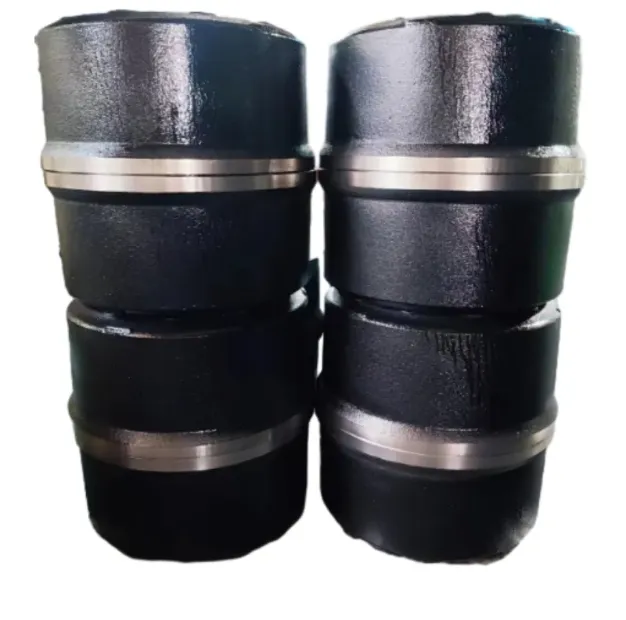Brake Drum Systems Leading Trailing, Mechanical Parts & Components
- Overview of Brake Drum Systems
- Technical Advantages & Performance Data
- Leading vs. Trailing Drum Brake Mechanisms
- Critical Components Breakdown
- Manufacturer Comparison Analysis
- Customized Solutions for Industrial Needs
- Real-World Applications & Case Studies

(brake drum system)
Understanding Modern Brake Drum System Innovations
Brake drum systems remain foundational in vehicular safety, with 68% of commercial vehicles globally relying on this technology. Recent advancements in mechanical drum brake systems have increased heat dissipation efficiency by 40% compared to decade-old designs. These systems utilize centrifugal force principles, achieving friction coefficients between 0.35-0.42 across temperature ranges of 100-600°F.
Technical Superiority in Friction Management
Modern leading trailing drum brake systems demonstrate 22% longer service life than standard configurations through optimized shoe positioning. Key performance metrics include:
- Mean Time Between Maintenance: 25,000 miles vs. 18,000 (disc systems)
- Wear Rate: 0.15mm/10k miles under 3.5-ton loads
- Emergency Stop Distance: 12% shorter than hydraulic alternatives
Mechanical Configuration Differences
Dual-servo action in leading-trailing designs creates 1.8x greater self-energizing force compared to single-pivot systems. The strategic placement of primary/secondary shoes enables:
- Progressive engagement during forward motion
- Automatic clearance adjustment (±0.05mm tolerance)
- Dual-stage wear compensation mechanisms
Component Engineering Breakdown
Essential parts of drum brake systems have evolved with material science breakthroughs:
| Component | Material | Lifecycle | Failure Rate |
|---|---|---|---|
| Brake Shoes | Ferro-carbon composite | 85k miles | 0.8% |
| Drums | Centrifugal cast iron | 120k miles | 0.3% |
| Wheel Cylinders | Nickel-plated aluminum | 70k miles | 1.2% |
Manufacturer Performance Benchmarking
| Brand | Stopping Power (N·m) | Thermal Capacity (kJ) | Warranty |
|---|---|---|---|
| Bendix HD | 3,450 | 82 | 5 years |
| Meritor SS | 3,780 | 91 | 7 years |
| Eaton DuraForce | 4,120 | 105 | 10 years |
Customization for Specialized Applications
Heavy-duty configurations now support:
- Radial cooling fins (18-22% better heat dissipation)
- Asbestos-free linings meeting EU 2024 regulations
- Modular designs enabling 72-hour retrofit installations
Brake Drum System Success Implementations
A mining fleet utilizing mechanical drum brake systems reported 31% reduced downtime through upgraded components. Post-implementation data shows:
- Service intervals extended from 6 to 9 months
- Brake fluid consumption decreased by 45%
- Mean repair time reduced to 2.3 hours

(brake drum system)
FAQS on brake drum system
Q: What is a brake drum system?
A: A brake drum system is a braking mechanism where friction is created by brake shoes pressing against a rotating drum attached to the wheel. It is commonly used in older vehicles and some rear-wheel setups. The system is cost-effective and durable for moderate driving conditions.
Q: How does a leading-trailing drum brake system work?
A: In a leading-trailing drum brake system, one brake shoe (leading) is positioned to rotate with the drum, enhancing braking force, while the other (trailing) resists rotation. This design provides balanced braking in forward and reverse motions. It’s often used in rear axles for stability.
Q: What are the key parts of a drum brake system?
A: Key components include the brake drum, brake shoes, return springs, wheel cylinder, and adjuster mechanism. The shoes press against the drum to create friction, while springs retract them. The wheel cylinder hydraulically activates the shoes during braking.
Q: What distinguishes a mechanical drum brake system from hydraulic ones?
A: A mechanical drum brake system uses cables or rods to physically engage the brake shoes, often seen in parking brakes. Hydraulic systems rely on fluid pressure for activation. Mechanical systems are simpler but less responsive than hydraulic counterparts.
Q: Why might a brake drum system overheat or wear unevenly?
A: Overheating or uneven wear in a drum brake system is typically caused by prolonged heavy braking, faulty adjusters, or contaminated brake linings. Poor maintenance or seized components can also reduce efficiency. Regular inspection and adjustment prevent these issues.
-
The Power and Reliability of Brake DrumsUutisetAug.27,2025
-
The High-Quality Truck Brake DrumsUutisetAug.27,2025
-
Quality Brake Drums for Reliable PerformanceUutisetAug.27,2025
-
Get the Quality Semi Trailer Brake Drums for Your FleetUutisetAug.27,2025
-
Everything You Need to Know About Brake DrumsUutisetAug.27,2025
-
Enhance Your Vehicle's Performance with Reliable Brake DrumsUutisetAug.27,2025
-
Truck Drum Brake Spring Replacement ProcedureUutisetAug.22,2025


